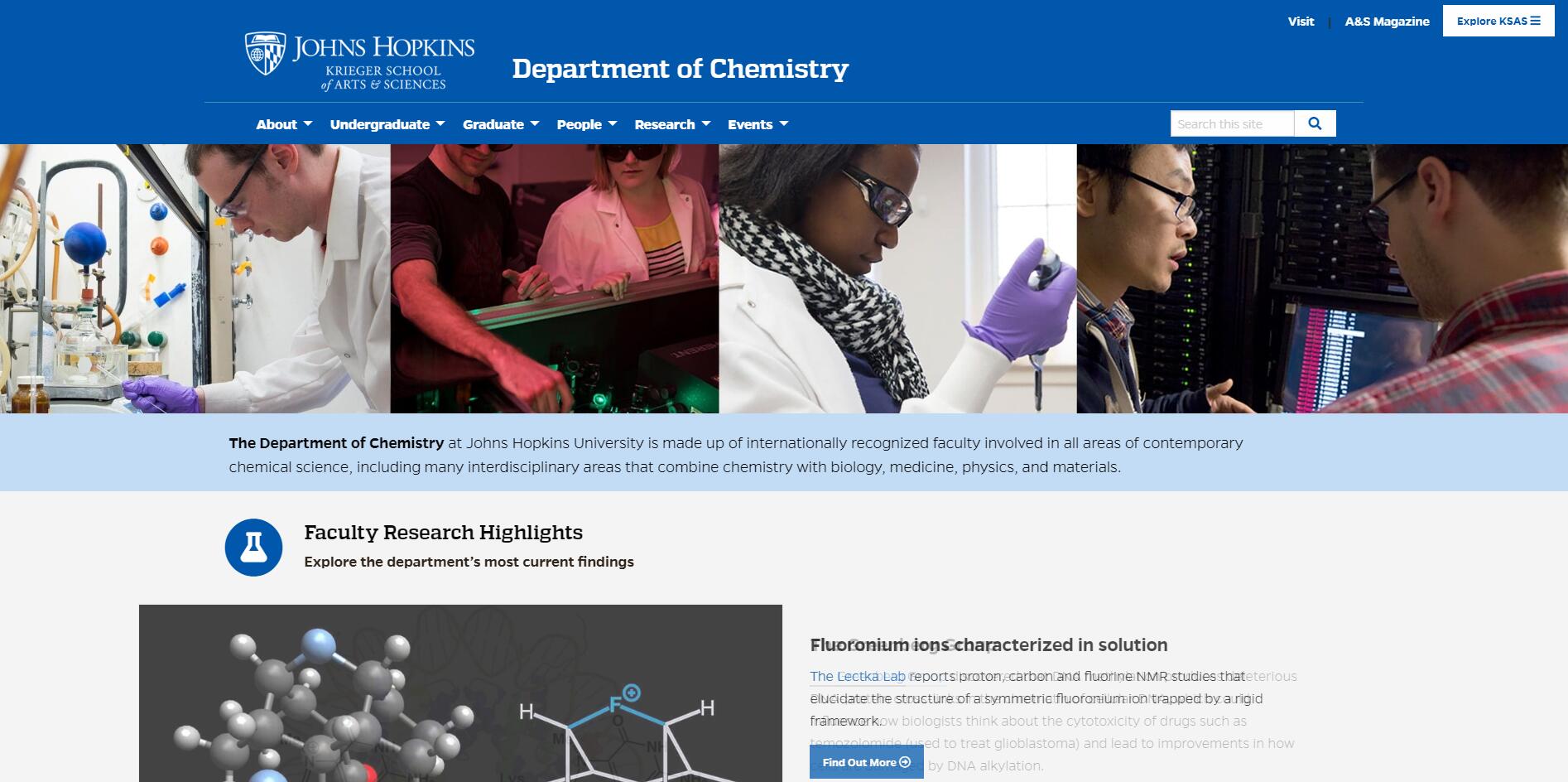If you are going to pursue a graduate degree in chemistry within the state of Maryland, then you have come to the right place. On this website, you will find the 5 best chemistry schools in Maryland. Please note that these rankings are based on student reviews, graduation rates, and the academic surveys submitted by peer colleges and universities throughout Maryland.

| Ranking | Graduate Chemistry |
| 1 | Johns Hopkins University Department of Chemistry Address: 138 Remsen Hall, Baltimore, MD 21218 Phone: (410) 516-7429 E-mail: chem.grad.adm@jhu.edu Website: http://chemistry.jhu.edu |
| 2 | Pennsylvania State University–University Park Department of Chemistry Address: 104 Chemistry Building, Box 69, University Park, PA 16802-4615 Phone: (814) 865-6553 E-mail: jbadding@pearl.chem.psu.edu Website: http://www.chem.psu.edu |
| 3 | University of Maryland–College Park Department of Chemistry and Biochemistry Address: 0107 Chemistry Building, College Park, MD 20742-4454 Phone: (301) 405-7022 E-mail: chemlife@umd.edu Website: http://www.chem.umd.edu |
| 4 | University of Maryland–Baltimore Graduate Program in Biochemistry and Molecular Biology Address: 0107 Chemistry Building , Baltimore, MD 21201 Phone: (410) 706-8297 E-mail: dweber@umaryland.edu Website: http://biochemistry.umaryland.edu |
| 5 | University of Maryland–Baltimore County Department of Chemistry and Biochemistry Address: 1000 Hilltop Circle, Baltimore, MD 21250 Phone: (410) 455-2491 E-mail: chemgrad@umbc.edu Website: http://www.umbc.edu |

Maryland Geography
An escarpment known as the “fall line” (or “fall line”) separates the coastal lowlands from the Piedmont Plateau. This low (up to 300 meters) hilly plateau is part of the Appalachian mountain system. To the west, the plateau passes into the Blue Ridge Mountains (“Blue Ridge”), further west are the Great Appalachian Valley, the Ridge and Valley (“Ridges and Valleys”) region and the Allegheny Mountains. It is in, near the border with West Virginia, that the highest point in the state of Maryland is located – Mount Hoye Cross, 1024 meters above sea level).
Despite the fact that Maryland is one of the most densely populated states in the United States, a significant part of its territory is occupied by nature reserves: forests, wetlands, and mountainous areas. The Appalachian Trail passes through Maryland, one of the most popular hiking trails in the United States.
Interestingly, in the Ridge and Valley region (near the town of Hancock), the Potomac River, which forms the southern border of the state, comes so close to the “Mason-Dixon Line” (northern border) that the “width” of Maryland here is less than three kilometers.
Due to the features of the relief and depending on the distance from the ocean, different regions of Maryland vary greatly in climate. The eastern counties of the state experience a humid subtropical climate with hot, humid summers and short, mild winters. In Ocean City, located on the Atlantic coast of the Delmarva Peninsula, the coldest month, January, typically averages between -2°C and 7°C, while the hottest month, July, averages between 19°C and 29°C. In Maryland’s largest city, Baltimore, which is located on the western shore of the Chesapeake Bay, in January it is usually -1°C to 7°C, and in July from 23°C to 33°C.
Further west, on the Piedmont Plateau, winters become somewhat cooler, with the city of Hagerstown averaging -6°C to 3°C in January and 18°C to 30°C in July. Further west, in the Appalachians, the climate is subtropical mountainous and even humid continental, in the city of Cumberland the temperature in January ranges from -7°C to 4°C, and in July from 17°C to 31°C.
